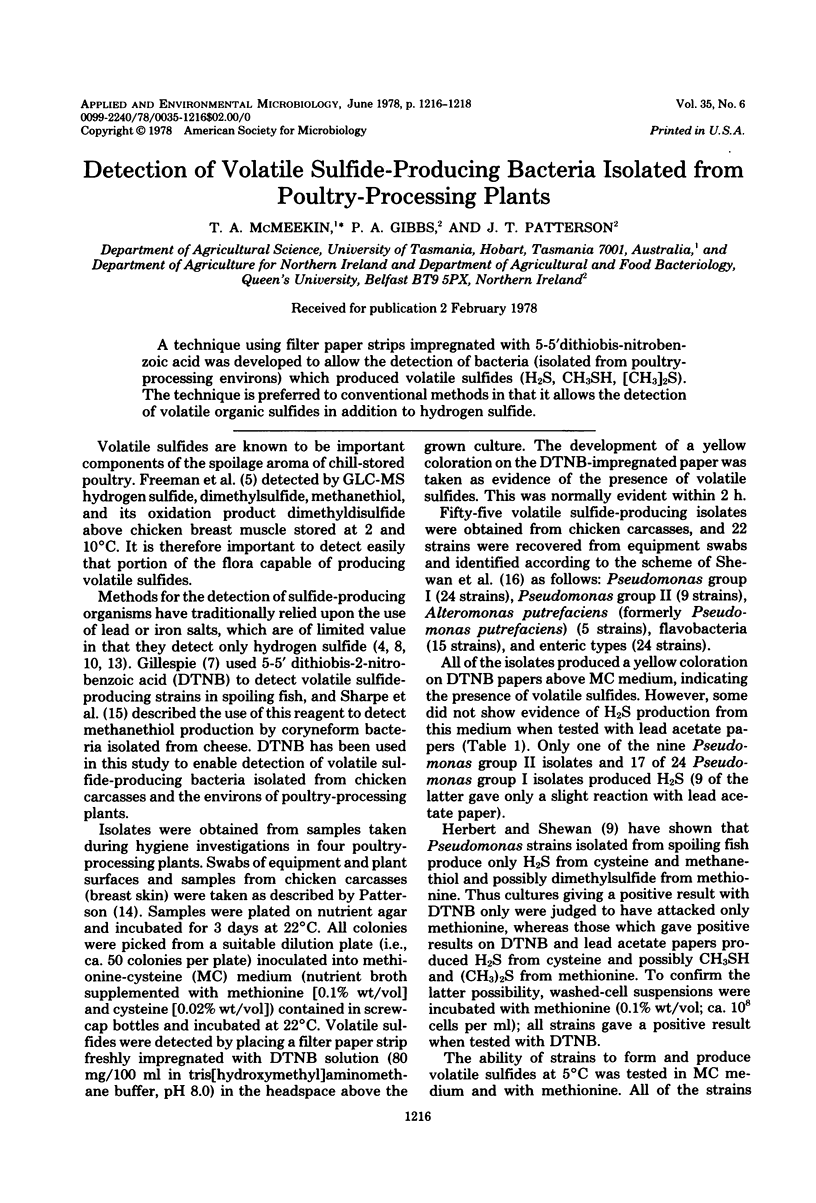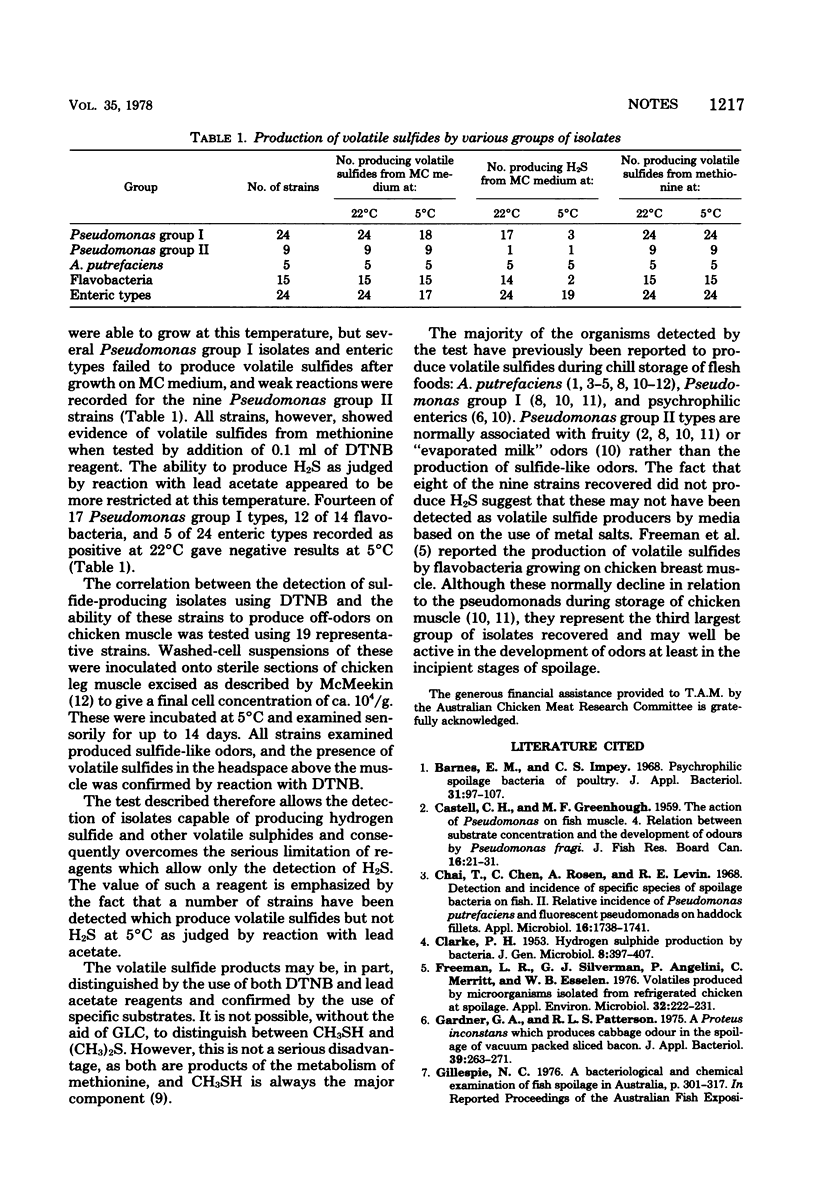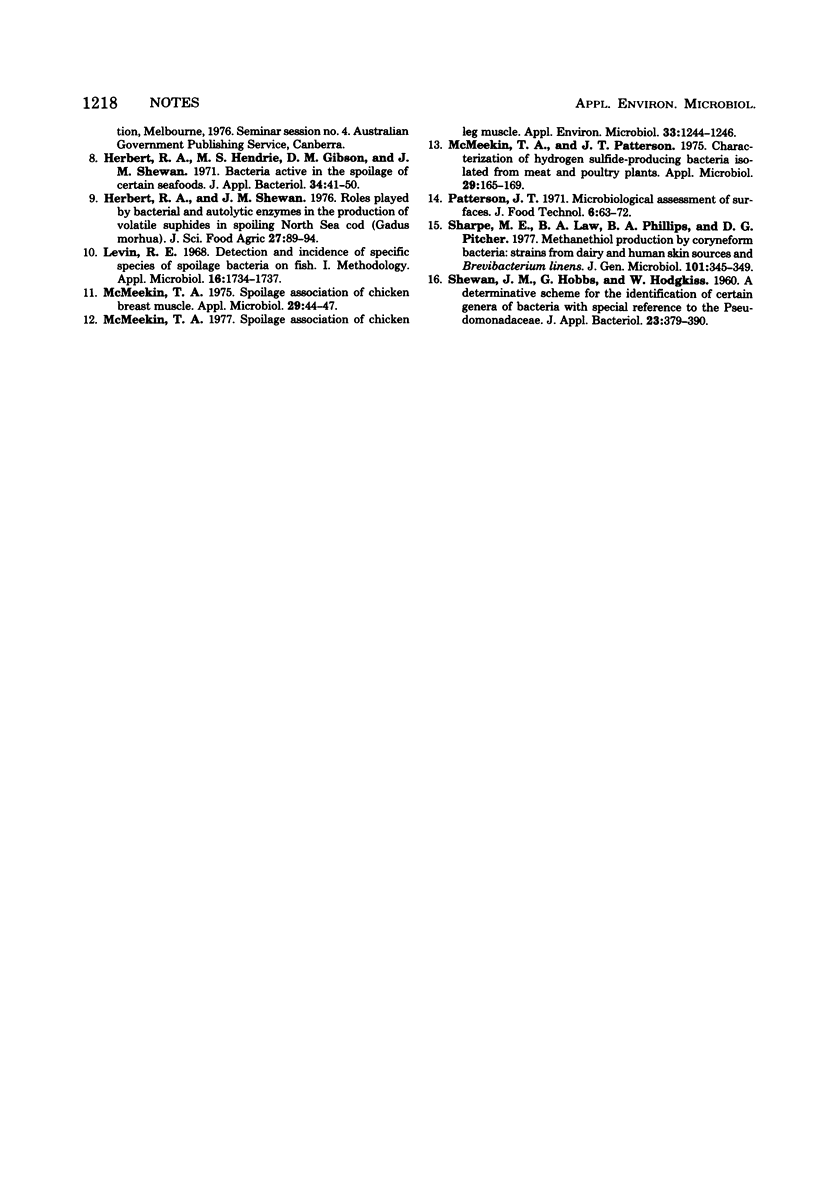Abstract
A technique using filter paper strips impregnated with 5-5'-dithiobis-nitrobenzoic acid was developed to allow the detection of bacteria (isolated from poultry-processing environs) which produced volatile sulfides (H2S, CH3SH, [CH3]2S). The technique is preferred to conventional methods in that it allows the detection of volatile organic sulfides in addition to hydrogen sulfide.
Full text
PDF


Selected References
These references are in PubMed. This may not be the complete list of references from this article.
- Barnes E. M., Impey C. S. Psychrophilic spoilage bacteria of poultry. J Appl Bacteriol. 1968 Mar;31(1):97–107. doi: 10.1111/j.1365-2672.1968.tb00345.x. [DOI] [PubMed] [Google Scholar]
- CLARKE P. H. Hydrogen sulphide production by bacteria. J Gen Microbiol. 1953 Jun;8(3):397–407. doi: 10.1099/00221287-8-3-397. [DOI] [PubMed] [Google Scholar]
- Chai T., Chen C., Rosen A., Levin R. E. Detection and incidence of specific species of spoilage bacteria on fish. II. Relative incidence of Pseudomonas putrefaciens and fluorescent pseudomonads on haddock fillets. Appl Microbiol. 1968 Nov;16(11):1738–1741. doi: 10.1128/am.16.11.1738-1741.1968. [DOI] [PMC free article] [PubMed] [Google Scholar]
- Freeman L. R., Silverman G. J., Angelini P., Merritt C., Jr, Esselen W. B. Volatiles produced by microorganisms isolated from refrigerated chicken at spoilage. Appl Environ Microbiol. 1976 Aug;32(2):222–231. doi: 10.1128/aem.32.2.222-231.1976. [DOI] [PMC free article] [PubMed] [Google Scholar]
- Gardner G. A., Patterson R. L. A proteus inconstans which produces 'cabbage odour' in the spoilage of vacuum-packed sliced bacon. J Appl Bacteriol. 1975 Dec;39(3):263–271. doi: 10.1111/j.1365-2672.1975.tb00571.x. [DOI] [PubMed] [Google Scholar]
- Herbert R. A., Hendrie M. S., Gibson D. M., Shewan J. M. Symposium on microbial changes in foods. Bacteria active in the spoilage of certain sea foods. J Appl Bacteriol. 1971 Mar;34(1):41–50. doi: 10.1111/j.1365-2672.1971.tb02267.x. [DOI] [PubMed] [Google Scholar]
- Levin R. E. Detection and incidence of specific species of spoilage bacteria on fish. I. Methodology. Appl Microbiol. 1968 Nov;16(11):1734–1737. doi: 10.1128/am.16.11.1734-1737.1968. [DOI] [PMC free article] [PubMed] [Google Scholar]
- McMeekin T. A., Patterson J. T. Characterization of hydrogen sulfide-producing bacteria isolated from meat and poultry plants. Appl Microbiol. 1975 Feb;29(2):165–169. doi: 10.1128/am.29.2.165-169.1975. [DOI] [PMC free article] [PubMed] [Google Scholar]
- McMeekin T. A. Spoilage association of chicken breast muscle. Appl Microbiol. 1975 Jan;29(1):44–47. doi: 10.1128/am.29.1.44-47.1975. [DOI] [PMC free article] [PubMed] [Google Scholar]
- McMeekin T. A. Spoilage association of chicken leg muscle. Appl Environ Microbiol. 1977 Jun;33(6):1244–1246. doi: 10.1128/aem.33.6.1244-1246.1977. [DOI] [PMC free article] [PubMed] [Google Scholar]
- Sharpe M. E., Law B. A., Phillips B. A., Pitcher D. G. Methanethiol production by coryneform bacteria: strains from dairy and human skin sources and Brevibacterium linens. J Gen Microbiol. 1977 Aug;101(2):345–349. doi: 10.1099/00221287-101-2-345. [DOI] [PubMed] [Google Scholar]


